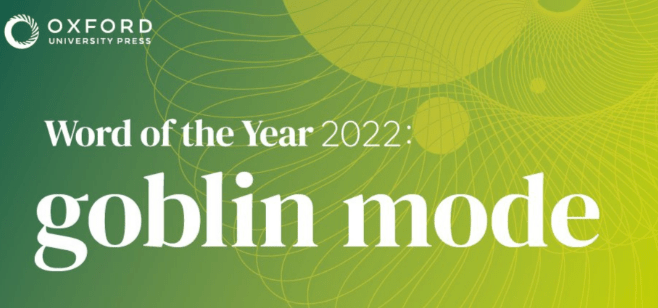Word of the Year
What do the words “goblin mode” and “metaverse” have in common? Well, they’ve both come in the top two of the Oxford University Press’ 2022 word of the year.
Meaning “a type of behaviour which is unapologetically self-indulgent, lazy, slovenly, or greedy.”, “goblin mode” beat “metaverse” to take first place after the process was opened to voters for the first time ever, as more than 300,000 people cast votes between the three terms shortlisted by Oxford Languages.
Increased Usage
In a December 4th announcement, Oxford Languages said the viral term “goblin mode” beat out “metaverse” and #IStandWith to become its 2022 word of the year. According to Oxford’s research, usage of the term metaverse “increased almost fourfold from the previous year in the Oxford Corpus,” driven in part by Facebook’s rebranding to Meta in October 2021.

The word “NFT,” or nonfungible token, won Collins Dictionary’s contest for the word of 2021, while “vax” took first place as Oxford’s chosen word that same year.
Metaverse lost to goblin mode, which went viral in February, as it seemingly “captured the prevailing mood of individuals who rejected the idea of returning to ‘normal life’” following COVID-19 lockdowns being lifted in many areas. #IStandWith took third place in the contest, driven by social media hashtags including #IStandWithUkraine following Russia’s invasion of the country in February.
Worthy Opponent
“As we grapple with relatively new concepts like hybrid working in the virtual reality space, the metaverse is particularly pertinent to debates about the ethics and feasibility of an entirely online future,” said Oxford Languages. “A worthy opponent to ‘goblin mode’, ‘metaverse’ gained voting traction with crypto communities and publications. We see the term continue to grow in use as more voices join the debate about the sustainability and viability of its future.”
In the video pitch for ‘metaverse’ released in November, Oxford said the term dated back to “the science fiction novel Snow Crash by Neil Stephenson,” released in 1992.
For more market insights, check out our latest Digital Twin news here.













